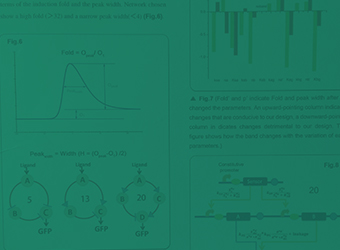Team:UESTC-China
From 2014.igem.org

Plant Vs HCHO
A war of plant and HCHO
★Presentation: Room 34-101, Saturday 12:30 PM, Session 2 ★Poster: Sunday, #13 (Stata)

introduction of our projectCancer globally kills eight million people each year, a number unchanged over the past five decades. The current paradigm for cancer treatment involves non-specific therapies such as chemotherapy and radiation that cannot differentiate between cancerous and healthy tissue. Scientists in the rising field of cancer immunotherapy are applying bionanomedical techniques to harness the patient’s own immune system to fight cancer. During primary tumor development, a patient’s innate immune function is active. However, tumors have developed a multitude of immune system inhibitors, which suppress a patient’s immune system and promote complete tumor development. We propose a novel vaccine delivery system (BactoVax) of tumor associated antigens and immunomodular agents encapsulated within probiotic bacteria, akin to those found in commercial yogurt. The proposed vaccine should breach the immunological barrier posed by primary tumors through the activation of macrophages and dendritic cells (DCs) in order to teach a patient’s immune system to recognize cell surface antigens and markers that distinguish tumors from healthy tissue. This process of “training” the immune system to target cancer stems from the adaptive immune function, which exploits the molecular properties of cytotoxic T lymphocyte.
We expect that these novel biosensors, together with the plug-in devices, will serve as intriguing synthetic biological tools for diverse practical applications.
Mining aromatics-sensing Biobricks
from the genomic database

Biosensor Mining
The core component of our biosensor toolkit is the transcriptional regulators that sense aromatics. For the comprehensiveness of aromatics-sensing, a data-mining process was conducted to mine transcriptional regulators for each typical class of aromatics from the database Uniprot.
LEARN MOREHigh-performance, profile-
specific biosensors

Biosensors
A comprehensive set of biosensor circuits have been implemented using the aromatics-sensing transcriptional regulators. Each biosensor has a specific aromatics-sensing profile. Furthermore, the orthogonality of their sensing profiles was carefully assessed for practical applications.
LEARN MOREConverting the undetectable into
the detectable

Adaptors
To expand the detection profiles of some biosensors, aromatics-metabolizing enzymes were taken from natural metabolic pathways, working as Adaptors to convert undetectable chemicals into detectable aromatics when coupled with biosensor circuits.
LEARN MORERapidly determining
the analyte concentration

Band-pass Filter
For the ease of practical analysis, a genetic device called "Band-pass Filter" has been constructed to allow the detection of analyte concentration within a specific range. Biosensors equipped with the Band-pass Filter can robustly quantify the aromatics in environmental samples.
LEARN MORECommunications, Questionnaire survey,
Factory Visit and interview

Human Practice
To obtain the information about public awareness and the situation of aromatics pollution, a survey including factory visit and questionnaires has been conducted. We also guided an iGEM HS team and held "Model iGEM" as a competition without competitiveness.
LEARN MORE
 "
"
